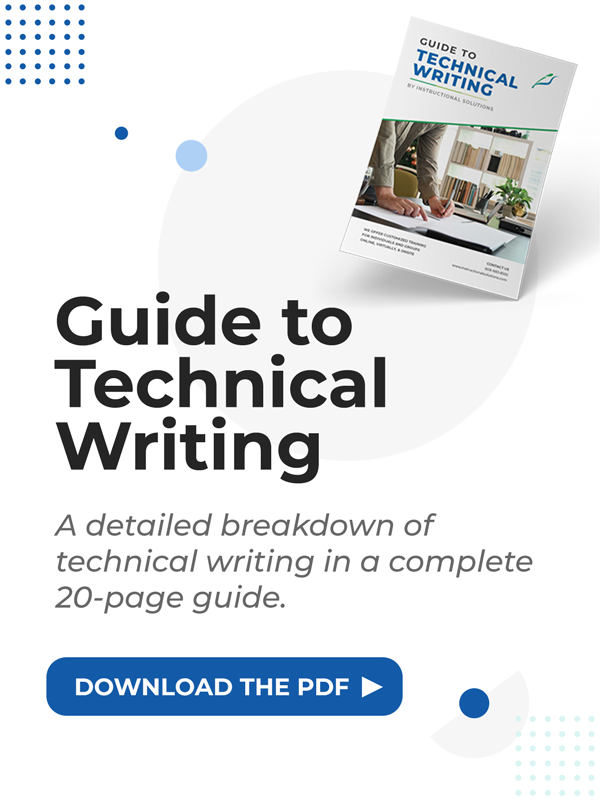Business Grammar: Run-Ons, Fused Sentences, and Comma Splice Errors

Originally published September 14, 2021, updated September 26, 2023

Table of Contents
We've reviewed literally thousands of client writing exercises in our business writing courses. The most common grammar error we see in client writing across all industries and positions is the fused sentence error. (Fused sentences are also called comma splices or run-on sentences.) They refer to compound sentences that are not punctuated correctly.
Fused sentences, run-on sentences, and comma splice errors are rampant in business writing!
These are grammatical errors that affect the professionalism of your documents even when they don’t affect the meaning. You want your writing to come across as clear and competent, so fixing your comma splices and fused sentences is important.
Explanation of comma splice and fused sentences
A fused sentence — also called a comma splice error or run-on sentence — incorrectly merges two independent clauses into one sentence by connecting the clauses incorrectly with a comma.
Incorrect example:
I’m sorry to hear you are not feeling well. Let’s reschedule our meeting. I’m open anytime this Thursday, if there is a particular time that will work best for you, let me know.
Should I notify the operations team we need to reschedule, as well?
Correct example:
I’m sorry to hear you are not feeling well. Let’s reschedule our meeting. I’m open anytime this Thursday. If there is a particular time that will work best for you let me know. (There should be a full stop—a period—after the word “Thursday,” indicating two separate sentences.)
Should I notify the operations team we need to reschedule, as well?
Solution for the example:
Do not merge two independent clauses together with only a comma (this is called a comma splice). Each thought, “I’m open any time Thursday.” and “If there is a particular time … ” should be its own sentence.
Other typical examples of incorrectly fused sentences/comma splices are:
- Thanks for your advice, it’s exactly what I needed.
- These proofs are great, thanks for sending them.
- I will see you on Tuesday, I’m looking forward to our meeting.
Business grammar rules to follow
Because business writing relies on simple, straightforward communication, it’s best to write one-clause sentences whenever you can. However, there are times when a compound sentence (a sentence with more than one clause) communicates your information most clearly, and sometimes, these add necessary variety to your writing.
Punctuate compound sentences comprised of independent clauses correctly by following either of these two rules:
- Join the two independent clauses together with a coordinating conjunction (and, but, for, or, nor, so, yet), and use a comma before the connecting word:
________________, and _______________.
Example:
He enjoys writing at work, and he is often lauded for his skill. - When you do not have a connecting word (or when you use a connecting word other than and, but, for, or nor, so, or yet between the two independent clauses), use a semicolon (;)
_____________________; _____________________.
Example:
Caleb often wrote proposals; Suki preferred to edit them.
Business writing tip
While rule #2, connecting independent clauses with a semi-colon, is grammatically correct, it will create a longer and more complex sentence. The goal of business writing is clear, easy-to-understand writing.
You could avoid using semi-colons in your writing across your entire career, and it would be fine! Semi-colons add complexity to a sentence. They're not wrong to use, but they're commonly used incorrectly and they add visual complexity. Why bother with them when there is another strategy?
Instead of using a semi-colon and merging the independent clauses to prevent a fused sentence, simply split the independent clauses into two separate sentences. Don't fuse the sentences.
Incorrect: The independent clauses are fused, creating a run-on sentence.
Caleb often wrote proposals Suki preferred to edit them.
Correct: The semi-colons connect the independent clauses.
Caleb often wrote proposals; Suki preferred to edit them.
Correct and visually clean: The independent clauses are two separate sentences.
Caleb often wrote proposals. Suki preferred to edit them.
As a reminder, comma splice errors and fused sentences (also called run-on sentences) don’t affect the meaning of what you are writing, but they certainly affect the professionalism and competency of your message. Here are two examples I have received in the past year, from very different fields and positions:- The Dean’s Office made an announcement a few weeks ago, there are no openings for Graduate Assistantship positions for the fall semester.
- I just wanted to take a second to thank you for choosing us here at Tasca for your service needs, I hope this service experience was worthy of a 5 STAR RATING!
Can you find the comma splice in each and fix it? (Hint: find the comma in each example and change it to a period/full-stop.) A good spell and grammar check program, like Grammarly or Microsoft Editor, will also pick these up.
If you want more information on run-on sentences, this article will help you Avoid Run-on Sentences in Your Business Writing. Our Proofreading & Grammar business writing courses, with offerings for native and non-native speakers at all levels, will also provide you with guidance and individualized feedback to help you strengthen your writing and fix grammatical mistakes like comma splices and fused sentences.
- The Dean’s Office made an announcement a few weeks ago, there are no openings for Graduate Assistantship positions for the fall semester.
Improve your business writing skills in an online, self-paced course.
Get detailed instructor feedback on your actual business writing in each of our online courses.
View all of our courses


